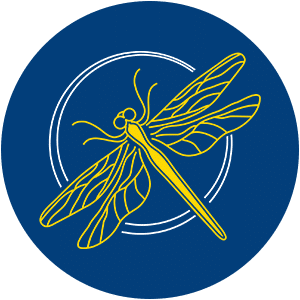At least 13% of people aged 12 and older in the US take antidepressants. In Illinois, at least 10.5% of the population uses antidepressants.
Antidepressant addiction can result in dangerous physical and mental health issues, and even lead to death. However, overcoming it is possible.
The first step is to better understand what antidepressants are and why they are addictive. In this guide, we explain everything you need to know about antidepressant addiction, its symptoms, and the available treatment options.

Table of Contents
What Are Antidepressants?
Antidepressant medications are prescription drugs that work by altering brain chemistry.
Besides anxiety disorders and depression, these medications are used in the treatment of various mental disorders such as panic attacks, eating disorders, OCD (obsessive-compulsive disorder), PTSD (post-traumatic stress disorder), and chronic pain.
Types of Antidepressants
Antidepressants are categorized into 3 types depending on their mechanism of action, which include:
- SSRIs (selective serotonin reuptake inhibitors) such as;
- Citalopram (Celexa)
- Fluoxetine (Prozac)
- Paroxetine (Paxil)
- Sertraline (Zoloft)
- Escitalopram (Lexapro)
- Fluvoxamine (Luvox)
- SNRIs (serotonin-norepinephrine reuptake inhibitors) such as;
- Venlafaxine (Effexor XR)
- Duloxetine (Cymbalta)
- Desvenlafaxine (Pristiq)
- Milnacipran (Savella)
- Levomilnacipran (Fetzima)
- TCAs (tricyclic antidepressants) such as;
- Amitriptyline (Elavil)
- Imipramine (Tofranil)
- Desipramine (Norpramin)
- Amoxapine (Asendin)
- Doxepin (Sinequan)
- Nortriptyline (Pamelor)
- Trimipramine (Surmontil)
- Protriptyline (Vivactil)

What Causes Antidepressant Addiction?
Patients suffering from mental disorders may develop psychological and physical dependence on antidepressants.
The psychological aspect of the dependence doesn’t relate to these drugs producing a high, because they don’t, but it rather comes down to the fear of having the negative emotions or thoughts return.
As for the physical aspect, it’s a result of these medications changing the balance of neurotransmitters in the brain. When the drugs are stopped suddenly, the unexpected imbalance can cause severe manifestations both physically and mentally.
What Are the Consequences of Antidepressant Addiction?
Taking antidepressants comes with a risk of side effects whether you’re misusing or using the medications normally.
Side Effects of Antidepressants
The adverse effects of antidepressants vary depending on the category of the drug, but most of them get better within a few weeks.
Common side effects associated with SSRIs and SNRIs include:
- Headaches
- Agitation
- Shaking
- Anxiety
- Digestion problems
- Stomach aches
- Diarrhea or constipation
- Loss of appetite
- Weight loss
- Dizziness
- Confusion
- Fatigue
- Erratic sleep patterns
- Reduced sex drive
- Difficulty achieving orgasms
- Erectile dysfunction

As for common side effects of TCAs, these include:
- Dry mouth
- Constipation
- Confusion
- Drowsiness and dizziness
- Blurred vision
- Urination problems
- Increased appetite
- Weight gain
- Irregular heart rate
Adverse Effects of Antidepressant Abuse
Antidepressant abuse can lead to a range of physical, psychological, and social side effects such as:
- Headache
- Sore throat
- Detachment and lack of emotion
- Confusion
- Blurred vision
- Tremors and shaking
- Sexual dysfunction and reduced sex drive
- Oversleeping or insomnia
- Irritability and agitation
- Increased appetite and weight gain
- Hallucinations
- Paranoia
- Slurred speech
- Seizure
- Suicidal thoughts
- Mood swings
- Talks about life being meaningless or hopeless or
- Giving up plans for the future
- Increased alcohol consumption
- Feelings guilty
- Diminished self-worth
- Sloppy appearance
- Losing interest in hobbies
- Professional and financial troubles
Antidepressant Withdrawal
Long-term use of antidepressants (more than 6 weeks) makes patients more vulnerable to experiencing withdrawal symptoms (sometimes called discontinuation syndrome) if they suddenly stop taking the drugs. Typically, antidepressant withdrawal can last up to 3 weeks.
Examples of antidepressant withdrawal symptoms include:
- Dizziness
- Diarrhea
- Headache and lightheadedness
- Nausea
- Fever
- Confusion
- Tremors
- Anxiety
- Vivid dreams
- Panic attacks
- Hallucinations
- Problems with muscle control lead to impaired coordination and trouble walking
- Reappearance of depression symptoms

Antidepressant Addiction Treatment Options
Overcoming antidepressant addiction is best approached through a combination of monitored care and behavioral therapy. The following are the most effective and common treatment options to consider against antidepressant substance abuse:
Detoxification
Antidepressant addiction treatment starts with an assessment of the patient’s condition to determine the severity of their dependence and create a suitable treatment plan based on their recovery needs.
That said, the treatment for most patients struggling with a medium to severe antidepressant addiction starts with a detoxification phase.
The purpose of the detox process is to safely eliminate the drug(s) and its traces from the body of the drug. This is done by giving the patient increasingly smaller doses of the drug until they stop using it completely.
Quitting antidepressants “cold turkey” can trigger withdrawal symptoms or worsen the symptoms of the disorders they were originally meant to treat.
This is why detox is crucial for treating antidepressant substance use disorder; it tapers down drug use under professional supervision, ensuring safety and effectiveness. This helps avoid complications and prevent relapse.
Care Programs
Here are the types of care programs that can be beneficial in cases of antidepressant addiction:
Inpatient/Residential Treatment
This type of treatment program is suitable for patients struggling with severe antidepressant addiction in need of intensive support.
It involves living in specialized facilities –such as recovery clinics or centers– and receiving 24-hour care in a controlled environment. Such programs typically last more than 2 or 3 months.
Partial Hospitalization Programs
PHPs for short, these programs are best suited for patients suffering from less severe to moderate antidepressant use disorder.
Here, patients visit the facility at least 5 days per week and attend 4 to 6 hours worth of therapy. However, unlike in-patient programs, they don’t stay overnight.
As such, the level of support in PHP is considered the middle of the way between in-patient and outpatient programs.
Intensive Outpatient Program
IOPs are a step down from PHPs but more intense than a standard outpatient program, combining structure and flexibility for a more independence-oriented treatment approach.
Similar to PHPs, patients receive therapy sessions at the treatment center and are free to leave afterward. The difference is that the frequency of therapy is lower in IOPs, typically 2 to 4 hours a day, 2 to 3 days per week.
The fewer restrictions of IOPs are suitable for patients struggling with moderate antidepressant addiction or those transitioning from in-patient or PHP programs.
Outpatient Programs
This sort of program provides the most flexibility for patients with mild to moderate antidepressant use disorder.
It doesn’t involve admission; patients live at home and go about their normal lives but come down to the facility for therapy sessions once or twice a week.

Therapy and Counseling
The effectiveness of an antidepressant addiction treatment plan is never at its highest without behavioral therapy and counseling. These components work on aspects such as maintaining abstinence and avoiding relapse.
Examples of the most commonly used techniques for antidepressant addiction include:
CBT (Cognitive Behavioral Therapy)
CBT is concerned with establishing links between our emotions or thoughts and our actions. It helps patients recognize negative patterns and feelings that lead to destructive behaviors (one of which is substance abuse).
By understanding these connections, therapists can work with patients to resolve their issues and replace harmful triggers with positive practices that are less likely to cause relapse.
DBT (Dialectical Behavioral Therapy)
DBT is a sub-type of CBT and it’s concerned with pinpointing the patient’s triggers for drug use.
This is necessary to enable those struggling with addiction to gain more control over their cravings and impulses. It also helps them healthily process their emotions and build practical coping mechanisms.
CM (Contingency Management)
CM utilizes positive reinforcement techniques to foster the desire to maintain abstinence in patients.
Plans for treating addictions stemming from a psychological root (such as antidepressant addiction) can significantly benefit from CM techniques that reward favorable behaviors.
MI (Motivational Interviewing)
Maintaining recovery is just as challenging as achieving, if not more. Constantly finding the motivation to fight the urges is critical to staying on the right track.
MI therapy addresses this treatment aspect and focuses on nurturing motivation in susceptible individuals to not only implement changes in their lives but also stick to them.
Individual Therapy
In individual therapy sessions, professionals engage with patients in one-on-one sessions to dive deep into their minds and uncover the root of their substance use disorder.
Patients struggling with mental issues that lead to addiction are more inclined to open up about their emotions, dreams, traumas, desires, and thoughts when in a safe, private environment.
Group Therapy
This method involves a number of patients going through a similar addiction problem meeting to share their experiences and participate in activities/discussions.
Typically led by a facilitator, group therapy offers patients a sense of community and a relatable support network.
Holistic therapy
Approaching the person as a whole, this type of therapy involves a range of treatments aiming to improve the patient’s understanding of themselves and enhance their overall physical and mental well-being.
Examples of holistic therapy include physical exercise, nature therapy, meditation, aromatherapy, pet therapy, and massage therapy.

Conclusion: Overcoming the Temptation
Antidepressant addiction can be tricky to navigate, but overcoming it isn’t impossible. Seeking professional help is the safest and most effective way to start your addiction recovery journey.
If you or your loved one is struggling with antidepressant addiction, please don’t hesitate to reach out to us. We at Illinois Recovery Center will use every resource to help you take back control with a personalized treatment plan built around your unique needs.
Please contact Illinois Recovery Center to learn about Antidepressant Addiction Treatment near you.
References
- https://www.statista.com/statistics/1133632/antidepressant-use-by-state-us/
- https://www.ncbi.nlm.nih.gov/pmc/articles/PMC4140701/
- https://pubmed.ncbi.nlm.nih.gov/10512092/
- https://www.ncbi.nlm.nih.gov/pmc/articles/PMC7613097/
- https://www.health.harvard.edu/diseases-and-conditions/going-off-antidepressants
- https://www.dhs.state.il.us/OneNetLibrary/27896/documents/IllinoisPrescriptionDrugEpidemiologicalProfile(Final).pdf
- https://www.cdc.gov/nchs/products/databriefs/db283.htm



